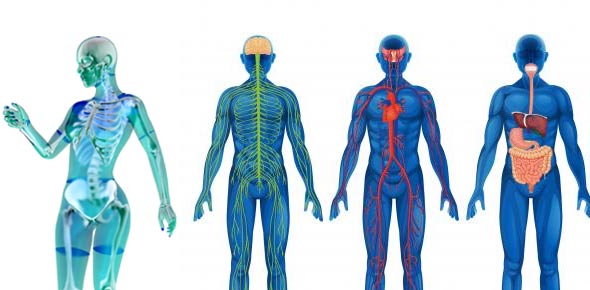Upper GI Tract Anatomy And Positioning

Upper GI Tract Anatomy and Positioning
- 1.
What projection will demonstrate the esophagus free of superimposition of the thoracic spine and heart?
- A.
AP
- B.
Lateral
- C.
Oblique
- D.
PA
Correct Answer
B. LateralExplanation
The lateral projection will demonstrate the esophagus free of superimposition of the thoracic spine and heart. This is because the lateral view allows for a side view of the esophagus, which helps to separate it from the surrounding structures. The AP (anteroposterior) view would not provide the same level of separation, as it would show the esophagus in relation to the spine and heart. The oblique and PA (posteroanterior) views may also show some degree of superimposition, depending on the angle and positioning of the patient.Rate this question:
-
- 2.
What projection of the UGI will best demonstrate the fundus and the duodenal loop?
- A.
PA Oblique (RAO position)
- B.
Lateral
- C.
AP
- D.
AP Oblique (RPO position)
Correct Answer
A. PA Oblique (RAO position)Explanation
The PA Oblique (RAO position) projection is the best choice for demonstrating the fundus and the duodenal loop. This projection allows for better visualization of these structures by positioning the patient in a specific angle that optimizes the visualization of the fundus and duodenal loop. The other options, such as the lateral and AP projections, may not provide the same level of visualization and detail for these specific structures.Rate this question:
-
- 3.
When is barium contraindicated for an UGI?
- A.
Patients with stomach perforations
- B.
Patients with hiatal hernias
- C.
Patients with iodine allergies
- D.
Patients with high blood pressure
Correct Answer
A. Patients with stomach perforationsExplanation
Barium is contraindicated for an UGI (upper gastrointestinal) procedure in patients with stomach perforations. This is because barium, a contrast agent, can leak through the perforation and cause further complications or infections. It is important to avoid using barium in such cases to prevent any potential harm to the patient.Rate this question:
-
- 4.
Where does deglutition take place?
- A.
Mouth
- B.
Pharynx
- C.
Esophagus
- D.
Stomach
Correct Answer
B. PharynxExplanation
Deglutition, also known as swallowing, is a process that involves the movement of food or liquid from the mouth to the stomach. The correct answer, Pharynx, is the part of the throat that connects the mouth to the esophagus. During swallowing, the pharynx plays a crucial role in directing the food or liquid into the esophagus and preventing it from entering the airway. Therefore, deglutition takes place in the pharynx.Rate this question:
-
- 5.
Hydrochloric acid and digestive enzymes are produced in the
- A.
Gastric mucosa.
- B.
Pyloric sphincter.
- C.
Ampulla of vater
- D.
Duodenal bulb
Correct Answer
A. Gastric mucosa.Explanation
Hydrochloric acid and digestive enzymes are produced in the gastric mucosa. The gastric mucosa is the inner lining of the stomach that contains specialized cells called parietal cells and chief cells. Parietal cells secrete hydrochloric acid, which helps in the breakdown of food and kills bacteria. Chief cells secrete digestive enzymes, such as pepsin, which break down proteins. Therefore, the production of hydrochloric acid and digestive enzymes occurs in the gastric mucosa.Rate this question:
-
- 6.
What structure is located within the dudenal loop?
- A.
Cardia
- B.
Pancreas
- C.
Spleen
- D.
Gallbladder
Correct Answer
B. PancreasExplanation
The structure located within the duodenal loop is the pancreas. The pancreas is a glandular organ that is part of the digestive system. It is located behind the stomach and is responsible for producing digestive enzymes and hormones such as insulin. The pancreas plays a crucial role in the breakdown and absorption of nutrients in the small intestine, which is why it is found in the duodenal loop.Rate this question:
-
- 7.
At which level is the IR centered for a PA projection of the stomach and duodenum?
- A.
T12/L1
- B.
L1/L2
- C.
L2/L3
- D.
Iliac crests
Correct Answer
B. L1/L2Explanation
The correct answer is L1/L2. This is because the PA projection of the stomach and duodenum is centered at the level of the L1/L2 vertebrae. This means that the x-ray beam is directed towards this area to capture the image of the stomach and duodenum. The L1/L2 level is important in this projection as it allows for proper visualization and assessment of these structures.Rate this question:
-
- 8.
Which body habitus demonstrates the location of the stomach very high and more horizontal
- A.
Sthenic
- B.
Asthenic
- C.
Hyposthenic
- D.
Hypersthenic
Correct Answer
D. HypersthenicExplanation
The hypersthenic body habitus demonstrates the location of the stomach very high and more horizontal. This means that the stomach is positioned higher in the abdomen and is oriented more horizontally compared to other body habitus types.Rate this question:
-
Quiz Review Timeline +
Our quizzes are rigorously reviewed, monitored and continuously updated by our expert board to maintain accuracy, relevance, and timeliness.
-
Current Version
-
Mar 19, 2023Quiz Edited by
ProProfs Editorial Team -
Mar 16, 2011Quiz Created by
Elrymom
 Back to top
Back to top


